Finding the Perfect Electric Guitar for Jazz
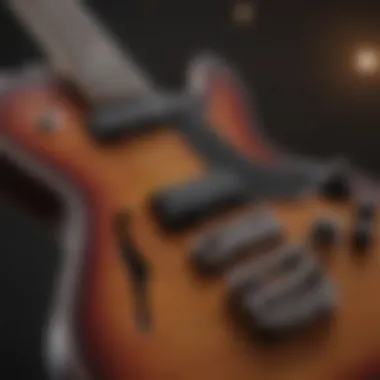
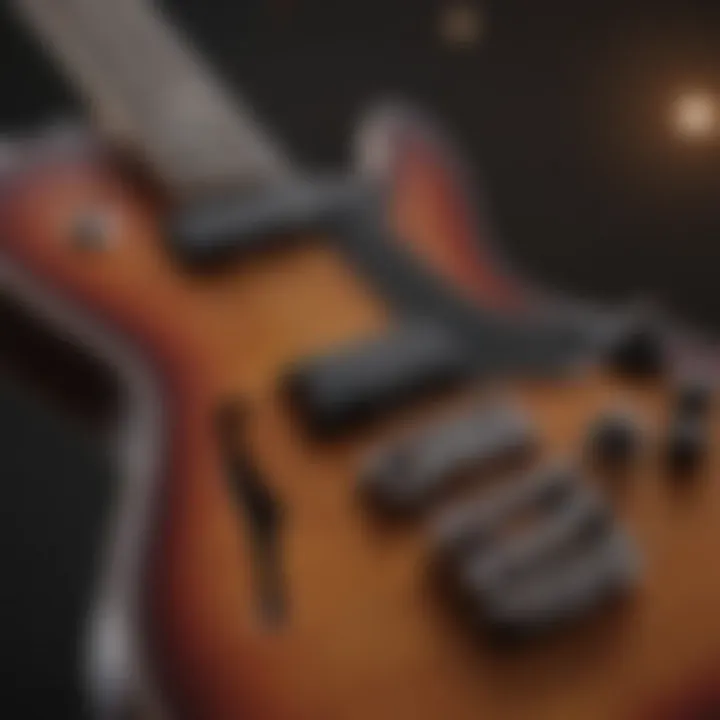
Intro
Artist Profile
Biography and Background
When thinking of jazz guitarists, names like Wes Montgomery, Jim Hall, or Pat Metheny often come to mind. Each of these artists brought something different to the table, defining styles and techniques that have influenced generations. But what is it that truly sets their playing apart? Understanding their backgrounds can shed light on the qualities we seek in an electric guitar.
For instance, consider Wes Montgomery's pioneering use of thumb picking and complex chords. His upbringing in Indianapolis steeped him in a blend of blues and gospel music, forging a path that many players follow today. His sounds often push the limits of what one might expect from an electric guitar.
Major Influences and Inspirations
Jazz guitarists don’t evolve in a vacuum. They are influenced by preceding artists and varied musical genres. For example, influences from classical music often seep into the playing style of contemporary jazz guitarists. Likewise, blues and rock have their marks, molded into the jazz context. It’s crucial to understand the interplay of these various styles to appreciate what a guitarist might seek in their instrument.
There’s a wealth of styles in jazz, and while some players prefer the crisp, clean notes of hollow-body guitars, others might lean toward the heavy sustain of solid-bodied models. Each choice resonates differently, affecting everything from performance style to personal expression.
Features of Ideal Jazz Electric Guitars
Sound Quality
Regardless of preference, sound quality stands paramount when choosing a guitar for jazz. Clean tones, warm lows, and bright highs contribute to the perfect jazz sound. A guitar with humbucker pickups often provides the harmonic richness desired by many jazz musicians. For example, the Gibson ES-175 or the Ibanez Artcore series can provide that signature jazz tone, allowing for smooth transitions between intricate chord changes and melodic solos.
Versatility
Not every guitarist sticks to just jazz. Many venture into rock, blues, or pop, which necessitates a versatile instrument. Models like the Fender Stratocaster or the Music Man Axis are frequently cited for their adaptability across genres. Features such as coil-splitting pickups or an array of tone controls can help flex the sound to suit various musical styles.
Playability
Playability is about feeling comfortable with your instrument. Factors like neck shape, weight, and fretboard materials come into play here. Jazz guitarists often find themselves performing lengthy solos. Therefore, necks that facilitate smooth fingering and fret access greatly enhance the playing experience. Guitars should feel like an extension of oneself, allowing for total immersion in the music.
Closure
The journey to finding the ideal electric guitar for jazz may seem daunting, but understanding the diverse elements at play makes the process easier. From appreciating musical backgrounds to exploring the specific characteristics of guitars, every detail matters. As aspiring musicians carve out their niche in the world of jazz, the right electric guitar will undoubtedly become a vital ally in their musical adventures.
"The guitar is the instrument of choice for many jazz musicians, reflecting the essence of freedom and creativity that defines jazz itself."
Understanding Jazz Music
Understanding jazz music is crucial when selecting the right electric guitar for jazz enthusiasts. At its core, jazz is more than a genre; it is a cultural phenomenon steeped in rich history. By grasping the essence of jazz music, musicians can make informed decisions about their instrument choices, ensuring they align with the unique sonic landscape jazz demands.
One of the primary benefits of understanding jazz is it helps players appreciate the different textures and nuances this genre presents. Jazz is known for improvisation, swing, and complex harmonies. Recognizing these elements can lead to a better understanding of what features to look for in a guitar.
The importance of specific characteristics, such as sound quality and playability, emerges clearly when one delves deep into jazz music. For example, a guitarist may find that hollow body guitars provide a warm, resonant tone that suits the genre beautifully.
Moreover, having a good grasp of jazz aids musicians in expressing themselves. Using the guitar to replicate or innovate jazz rhythms enhances both the artist's performance and the listener's experience. In essence, a deep comprehension of jazz not only cultivates better musicianship but also fosters a connection between the guitarist and this vibrant musical tradition.
The Evolution of Jazz
Jazz music has undergone a significant transformation since its inception in the early 20th century. The genre emerged from African American communities in New Orleans, blending elements from blues, ragtime, and classical music. As time passed, jazz evolved into various styles, including bebop, cool jazz, and fusion, each contributing to its rich tapestry.
The evolution of jazz is marked by groundbreaking jazz musicians who introduced new forms and techniques, pushing the boundaries of music. One can take a road trip through jazz history and hit milestones from Louis Armstrong's improvisational genius to Miles Davis's genre-defying experiments with electric instruments. Each phase of jazz evolution reflects a cultural shift, illustrating how the genre is deeply intertwined with societal changes.
Key Characteristics of Jazz
Jazz is characterized by several key features that not only define its sound but also demand unique approaches from musicians, especially from guitarists.
1. Improvisation: Perhaps the most defining aspect of jazz is improvisation. Musicians often take turns creating spontaneous solos, adding a lively unpredictability to performances. This unpredictability requires a solid understanding of music theory and the ability to communicate effectively with fellow musicians.
2. Syncopation: Jazz employs off-beat rhythms that create a swinging feel. This rhythmic play adds complexity and makes the music groove. Guitarists need to master syncopation to fully engage with jazz standards.
3. Complex Harmonies: Jazz is known for its extended chords and sophisticated progressions, providing a rich harmonic foundation. Understanding these harmonies allows guitarists to navigate the chords with confidence and creativity.
4. Emotional Expression: Jazz musicians often convey deep emotions through their music. This emotional depth is essential for connecting with an audience and can be achieved through phrasing, tone, and dynamics.
In summary, a deep dive into jazz music provides a valuable context for choosing the right electric guitar. Understanding its evolution and characteristics can shape a musician's approach, refine their technique, and ultimately enhance their ability to express themselves through jazz.
The Role of Guitar in Jazz
The guitar plays a pivotal role in jazz music, serving as both a harmonic backbone and a voice of expression. As jazz evolved through the decades, the guitar became more than just a rhythm instrument; it became an essential soloist's tool. Jazz guitarists wield their instruments to explore intricate melodies and nuanced harmonies. The unique sound and expressiveness of an electric guitar can evoke emotions that resonate deeply with listeners, keeping the spirit of jazz alive.
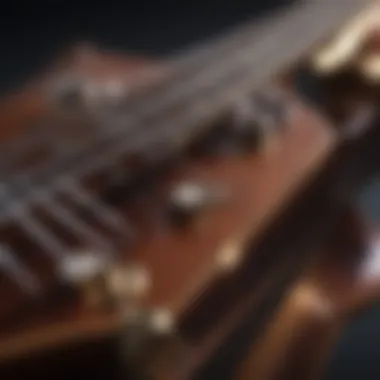
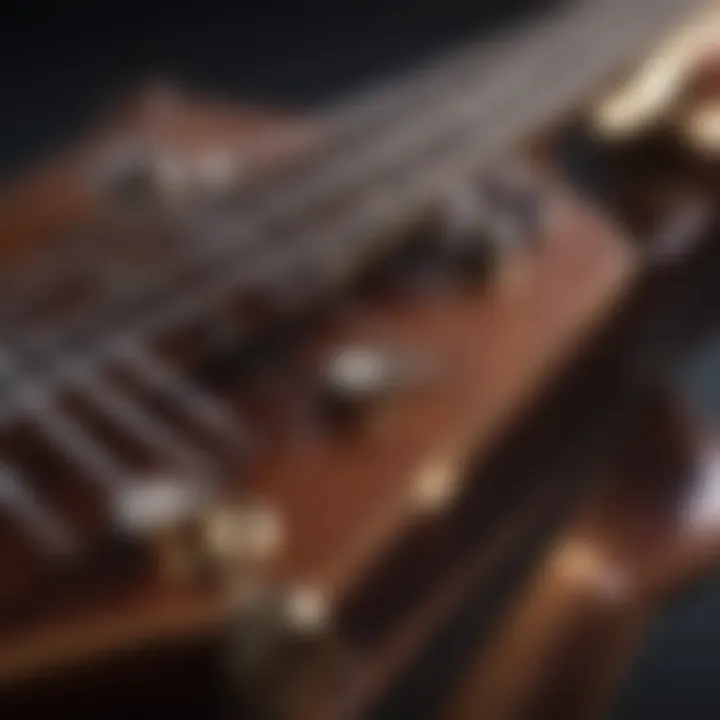
This exploration of the guitar's role sheds light on how it integrates within a band context and stands out in solo performances. Unlike other instruments that might rely heavily on pre-defined structures, the guitar invites improvisation. With the right electric guitar in hand, jazz musicians can transcend traditional boundaries, blending styles and personal flair to create something uniquely their own.
"Jazz is a very personal expression of who you are. The guitar, with its diverse tonal palette, captures that essence perfectly."
Guitarists Who Influenced Jazz
Many guitarists have left indelible marks on jazz, elevating its complexity and emotional depth. For instance, Django Reinhardt, with his innovative techniques—despite his two injured fingers—pioneered the use of the guitar in this genre. His virtuosic playing showcased the expressive potential of the guitar, influencing countless players following him.
Then there's Wes Montgomery, who is renowned for his smooth, melodic interpretations and unique thumb-picking style. His approach brought a different dimension to jazz guitar, shifting focus to enveloping tonality alongside intricate improvisations. Not to forget Jim Hall, whose sophisticated harmonics challenged conventional guitar roles in ensemble settings.
Notable mentions include:
- Charlie Christian: A pioneer of the electric guitar, bridging early jazz and bebop.
- Pat Metheny: Famed for his eclectic, innovative style that incorporates world music themes.
These guitarists, among others, redefine what it means to play jazz guitar, continuously pushing the envelope of creativity and style.
Techniques and Styles
Jazz guitar techniques differ immensely, effecting everything from rhythm to soloing. A few fundamental styles stand out, shaping how the instrument is used.
Chord-Melody Style: This style combines chords and melodies. Musicians use the guitar to provide both harmonies and lead lines, allowing for a fuller sound. This approach emphasizes the guitar’s versatility, reflecting a piano-like capability in the hands of a skilled player.
Swing Comping: Essential to authentic jazz sound, swing comping incorporates syncopated rhythms, making the guitar align seamlessly with the rhythm section. Players need to master the art of timing, ensuring that their strumming captures the essence of swing.
Bebop and Modern Jazz: For those venturing into bebop, speed and complex chord changes are the mainstay. Guitarists must create rapid phrases and intricate runs while keeping the listener engaged. Modern jazz sees an incorporation of various genres, enabling guitarists to explore different tonalities and electronic effects, accentuating the whimsical nature of contemporary jazz.
Parameters for Choosing an Electric Guitar for Jazz
Selecting the right electric guitar for jazz is not merely an exercise in shopping; it's about understanding what makes sound resonate and how various guitar features can influence your musical expression. For jazz musicians, the subtleties of tone, the ability to express emotion, and the overall feel of the instrument can profoundly shape one’s performance and creativity. Let's delve into the elements that truly matter when choosing the ideal electric guitar for jazz.
Sound Quality
The first parameter that deserves more than a cursory glance is sound quality. In jazz, a guitar’s tone can be the difference between a haunting melody and a muddled mess. High-quality pickups are crucial as they convert string vibrations into electrical signals. Here’s what to consider:
- Pickup Types: Different pickup types, like humbuckers or single-coils, lend a unique character to the sound. Humbuckers tend to deliver a warm and rich tone, perfect for the smoother tones sought in jazz. Conversely, single-coils can provide clarity and brightness, excellent for more articulate playing.
- Body Type: The body of the guitar, whether hollow or solid, also influences sound. Hollow body guitars like the Gibson ES-175 offer deeper, resonance and warm tones, whereas solid bodies may offer more sustain and a sharper attack.
To be effective in a jazz context, sound quality is essential. A guitar that resonates well in your hands will also resonate well with your audience.
Versatility
Next up, versatility. In jazz, adaptability can mean the difference between a good performance and a stellar one. The style is often unpredictable, moving through various genres, from bebop to smooth jazz, and even incorporating elements of rock or blues. Thus, a guitar that can handle varied styles is invaluable:
- Sound Modification: Consider opting for a guitar with a range of tone controls. Adding effects pedals can also expand your versatility. This allows for experimentation with various soundscapes during your performances.
- Alternative Tunings: A guitar that remains easy to play under different tunings can open up a world of possibilities. This helps in experimenting with unique chords and scales that can enrich your jazz repertoire.
Playability and Comfort
Playability and comfort are probably the most subjective parameters when selecting a guitar, yet they hold tremendous weight in your playing experience. Every musician has their own preferences, and finding the right fit is paramount:
- Neck Profile: The profile of the neck, be it thin or wide, can greatly impact how easily you can navigate the fretboard. A comfort-enhancing guitar is much more likely to inspire your creativity.
- Weight and Balance: A guitar that’s too heavy can wear you down during extended play sessions. Balance is key—if the guitar feels right when you’re playing it, you're more likely to keep it in your hands for longer.
Remember, if you’re comfortable holding your guitar, you’ll be more open to exploring sounds and techniques without distraction.
Aesthetic Considerations
Lastly, let's address aesthetic considerations. While this may seem superficial at first glance, the appearance of your guitar can influence your playing philosophy and stage presence:
- Visual Appeal: Guitars can evoke emotions, and a beautifully designed instrument can even spark inspiration. Whether you prefer flashy finishes or understated elegance, the visual aspect is part of the instrument's personality.
- Personal Branding: For performing musicians, your instrument is often part of your identity on stage. A unique or eye-catching guitar can enhance your presence in a crowded musical scene.
Notable Electric Guitar Models for Jazz
In the expansive realm of jazz music, the choice of electric guitar holds considerable significance. Selecting the right model can profoundly shape a musician's sound and versatility, making it essential to find a guitar that resonates with individual style while remaining true to jazz's intricate demands. Here, we delve into several notable electric guitar models that have established themselves as staples within the jazz genre. Each model presents its own unique elements that cater to the diverse playing styles and tonal preferences of jazz enthusiasts.
Hollow Body Guitars
Gibson ES-175
The Gibson ES-175 is a cornerstone in the jazz guitar world, renowned for its rich tone and warm sound. Its full-bodied structure allows it to produce deep, resonant notes, making it a favorite among many jazz players. The ES-175 is equipped with dual humbucker pickups, which significantly diminish unwanted noise and create a smooth, creamy sound. One of the standout features of this model is its versatility; it performs well in both solo performances and ensemble settings.
Despite its many benefits, some guitarists share a concern about its weight. For prolonged play, this can become a slight drawback. However, many still consider it a worthy investment, given its iconic status and unparalleled sound quality.

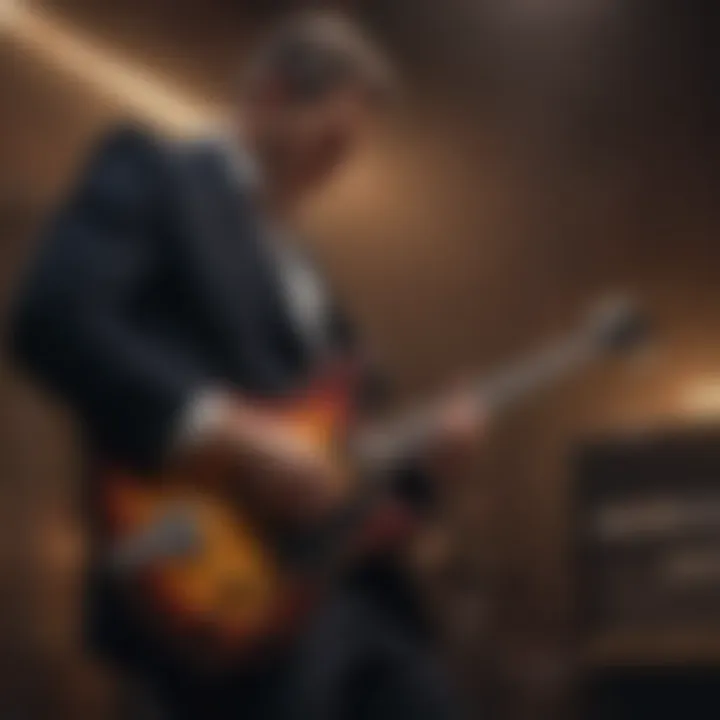
'Angelico Excel
The D'Angelico Excel showcases exquisite craftsmanship and is celebrated for its detailed design. Apart from its stunning aesthetics with elegant curves and stunning finishes, the Excel delivers a wonderful jazzy sonic character, characterized by its warm tones and bright attack. The unique feature here is its floating humbucker pickups which maintain clarity and resonance without losing warmth.
While this guitar is a visual treat, its price tag can be quite steep, causing some to hesitate. Yet, its artistic appeal and unrivaled sound make it a beloved choice among serious jazz performers.
Epiphone Casino
The Epiphone Casino has an enticing appeal, especially for those looking for a more affordable option without sacrificing quality. Known for its lightweight, solid feel and vibrant tonality, it has been embraced by numerous jazz musicians throughout the years. Its P90 pickups bring a distinctive bite, allowing notes to resonate with clarity and punch.
One primary characteristic of the Casino is its incredible playability; guitarists often find themselves effortlessly navigating its fretboard. On the downside, its unique sonic palette may not suit everyone's taste, especially if a warmer sound is what one seeks. However, many appreciate it for providing a diverse range of sounds ideal for jazz improvisation.
Semi-Hollow Body Guitars
Gibson ES-335
The Gibson ES-335 stands as an embodiment of jazz guitar innovation. It combines the best of both hollow and solid body guitars, offering a unique tonal palette. With its exceptional sustain and versatility, guitarists frequently turn to the ES-335 for live performances and recording sessions alike. The type of pickups in this model, typically humbuckers, brings forward a rich and warm sound, essential for jazz improvisation.
One key advantage of the ES-335 is its ability to handle various musical genres, making it a flexible option for guitarists who dabble in more than just jazz. However, some players find its price somewhat prohibitive, especially at the professional level.
Fender Telecaster Thinline
The Fender Telecaster Thinline is appreciated for its lighter weight and semi-hollow construction, making it an agile choice for many guitarists. Its unique sound — bright yet smooth — lends perfectly to intricate jazz riffs. The key characteristic of this guitar is its punchy tone that complements the fullness of traditional jazz.
Players often rave about its comfortable neck design, allowing for easy transitions across the fretboard. Nevertheless, some traditionalists may argue that it lacks the depth that a fully hollow body can provide, but it compensates with its agility and crisp sound.
Ibanez Artcore
Ibanez Artcore series offers a modern take on classic jazz guitar designs. Known for its affordability without skimping on quality, the Artcore delivers surprisingly rich tones, maintaining a balance between versatility and ease of use. One of its standout features is its versatile pickup system, which caters to a variety of tonal preferences — ideal when experimenting with diverse jazz styles.
While it might not carry the same vintage charm as other models, its budget-friendly nature makes it a practical option for aspiring musicians. However, some might find that it doesn't quite match the resonance of pricier competitors.
Solid Body Guitars
Fender Stratocaster
The Fender Stratocaster, often associated with rock and blues, has found its way into the jazz scene as well. Its renowned playability and distinct sound allow for expressive solos and complex chord structures. With three single-coil pickups, it delivers a bright and vibrant tone that many jazz musicians embrace.
The versatility of the Stratocaster is one of its most discussed points among guitarists, as it can adapt to various styles seamlessly. However, it may not produce as warm a tone as some hollow body or semi-hollow body guitars, causing purists to lean towards more traditional options.
Gibson Les Paul
A true heavyweight in the music world, the Gibson Les Paul has become synonymous with power and depth in sound. Its solid body construction lends it significant sustain and strong midrange presence, making it suitable for jazz guitarists seeking more punch in their play. The Les Paul typically includes humbucker pickups, offering a smooth, warm tone that melds well with jazz standards.
Nonetheless, its weight can pose a challenge for lengthy jam sessions, something to consider when exploring this powerful instrument. Still, many find that the characteristics outweigh the inconvenience.
PRS Custom
The PRS Custom 24 is a versatile beauty that attracts guitarists across genres, including jazz. With its unique combination of comfortable playability and rich tonal options, this electric guitar allows for an expressive range. Featuring a double cutaway body and a range of pickup configurations, it accommodates various playing styles with ease.
While some might find it less traditional for jazz, the Custom 24 has been steadily gaining popularity in the jazz community for its ability to produce crisp highs and clear lows. The drawback, however, lies in its price point, as it often leans towards the upper end of the market, making it less accessible for beginners.
In summary, the selection of electric guitar models for jazz enthusiasts is diverse and rich with options. Understanding each model's unique attributes allows musicians to pinpoint which guitar resonates best with their style and sound.
The Importance of Pickups in Jazz Guitar
When it comes to jazz guitar, the role of pickups can’t be overemphasized. They are essentially the heart of the guitar’s voice, translating vibrations into sound. For jazz enthusiasts, selecting the right pickup type and configuration could mean the difference between a warm, classic sound and something that feels harsh or uninspired. Understanding pickups lays down a solid foundation for crafting that signature jazz tone that resonates with both musicians and audiences alike.
Types of Pickups
Humbuckers
Humbuckers are often seen as the go-to option for jazz guitarists. They are designed to eliminate electrical hum, which makes them particularly useful in settings where noise can be a distraction. One of the most significant aspects of humbuckers is their ability to produce a thick, rich sound that is perfect for jazz’s smooth melodies. Their dual-coil structure captures a fuller range of frequencies, giving jazz solos a warm, enveloping quality.
The key characteristic here is that they offer a balanced tone without losing clarity, allowing intricate fingerpicking techniques to shine through. For many jazz musicians, this warmth is an essential ingredient, making them a popular choice. However, with this lush sound comes a heavier weight in the guitar, and they can sometimes lack the bite required for sharper tones.
Single-Coils
On the other hand, single-coil pickups bring a different flavor to the table. Known for their bright and crisp tone, they can really articulate each note with precision. Jazz guitarists who favor intricate lines or want their melodies to cut through a band ensemble may find single-coils appealing. They excel in producing a vibrant sound that can turn rudimentary jazz progressions into something special.
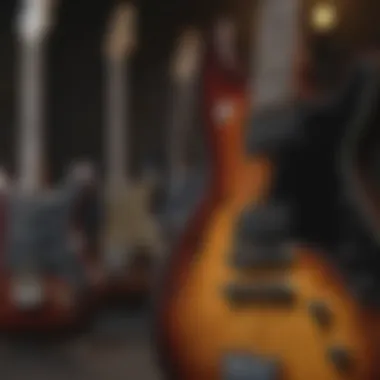
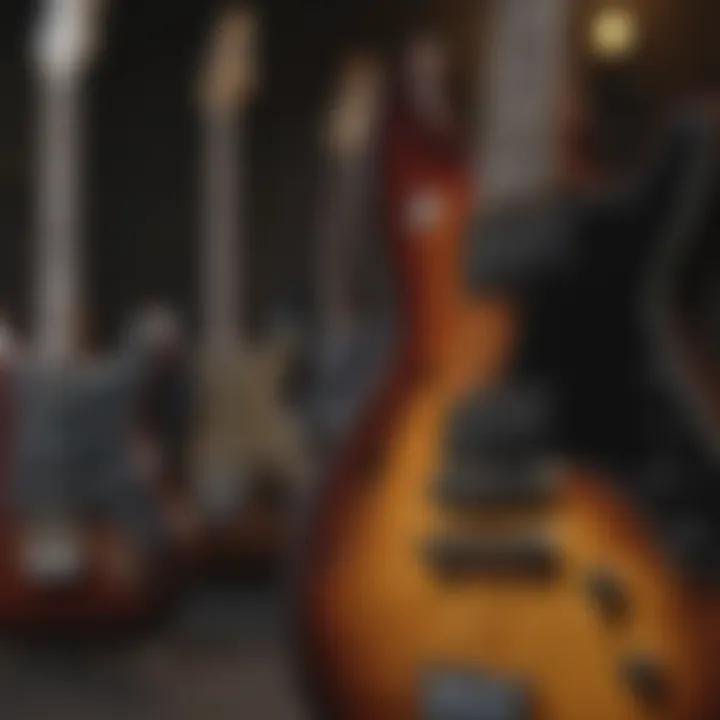
However, while they are undoubtedly beneficial for clarity, single-coils are more susceptible to interference and hum, which might not sit well in louder environments. Their unique feature is the ability to deliver that edgy, expressive tone, but one must weigh the loss of warmth against the advantages of sharpness.
P90s
P90s can be thought of as a sort of middle ground between humbuckers and single-coils. These pickups offer a unique, punchy sound with a character that blends clarity and warmth. They bring a certain grit that can add a lively edge to jazz riffs. Their versatility makes them a compelling choice for jazz musicians who play across various styles.
The calling card of P90s is their ability to capture a diverse range of tones, keeping the nuances intact even when playing at higher volumes. While it’s true they can sometimes fall short in the hum-canceling department compared to their humbucker counterparts, their tonality is compelling enough to make them a popular choice—ideal for those looking to define their sound in a crowded genre.
Pickup Configuration
The configuration of pickups greatly impacts how sound is produced. Whether you opt for a classic two-humbucker setup on a jazz guitar or a blend of single-coils and P90s, understanding your musical goal is key. Individual pickups can be used in various combinations to achieve desired warmth, brightness, and response. This versatility is particularly critical in jazz, where dynamics and subtleties matter as much as technical skill. By experimenting with pickups and configurations, budding jazz guitarists can discover a myriad of sound possibilities, leading to their unique musical expression.
Essential Gear and Accessories for Jazz Guitar
When it comes to navigating the world of jazz music, selecting the right electric guitar is only part of the journey. The essential gear and accessories that accompany your instrument are pivotal to crafting your sound and enhancing your performance. These include amplifiers and effects pedals, which serve as the foundation for shaping how your guitar resonates in a jazz context.
Amplifiers
Amplifiers act as the bridge between your guitar and the audience. In jazz, clarity and warmth are crucial, making the choice of amp paramount. Not all amplifiers are born equal; their characteristics have a profound impact on tonal quality.
- Tube Amplifiers: These amps are the darling of jazz musicians. They produce a rich, warm sound that resonates perfectly with the smooth articulations of jazz riffs. Models like the Fender Blues Junior are often recommended for their responsiveness to an artist's playing style. The way they compress sound makes every note veritable music to the ears, especially when playing through a clean channel.
- Solid-State Amplifiers: Although often perceived as less dynamic than tube models, solid-state amps can be very reliable and consistent. They can handle various situations, from small gigs to larger venues, without much fuss. A good example is the Roland JC-120, known for its stereo chorus effect that adds depth to jazz tones.
However, one can’t overlook the importance of EQ controls and reverb effects. These elements in an amplifier allow a guitarist to fine-tune their sound. A little reverb often brings the essence of a smoky jazz club to the living room.
Effects Pedals
Diving deep into effects pedals reveals a treasure trove of tonal possibilities. While traditional jazz is characterized by its purity, modern jazz musicians often blend genres. Effects pedals provide that extra flavor.
- Reverb Pedals: Every jazz guitarist could benefit from a good reverb pedal, which creates space in the sound. Something like the TC Electronic Hall of Fame can produce lush, atmospheric sounds that can make your playing feel larger than life.
- Delay Pedals: Delay can be used subtly to thicken lines or playfully in more experimental jazz settings. The MXR Carbon Copy is a classic choice that gives a warm analog delay, matching well with melodic lines.
- Overdrive Pedals: For those looking to add a little grit, an overdrive pedal such as the Ibanez Tube Screamer can provide a mild growl that doesn’t steer too far from the jazz tradition while enhancing expressivity.
Incorporating these pedals doesn’t mean sacrificing the jazz ethos. Instead, they provide an avenue for jazzists to explore new territory while maintaining the soul of the genre.
"Gear is not just about function; it’s about the emotions it stirs."
Maintaining Your Jazz Guitar
When it comes to playing jazz, having the right guitar is just half the battle. The other half is maintaining the instrument you rely on. Proper maintenance is not merely a chore, but rather an essential practice that keeps your instrument sounding its best. A well-cared-for guitar not only enhances the tonal qualities needed for jazz but also prolongs the lifespan of the instrument itself. Consider your guitar as a fine wine; it requires careful storage and attention to detail. Any musician worth their salt knows that neglect can lead to performance issues that may undermine the very essence of jazz artistry.
Regular Maintenance Tips
Caring for your electric guitar might seem daunting, but breaking it down into manageable tasks can simplify the process. First and foremost, keeping your strings clean is crucial. Oil buildup can make your strings sticky, dulling the brilliance of each note. Here are effective tips:
- Wipe your strings after each session with a soft cloth. This simple gesture can eliminate sweat and dirt that accumulate over time.
- Change your strings regularly. Depending on your playing frequency, this could be every few weeks or once a month. Fresh strings translate to clarity and better resonance, which is indispensable for jazz.
- Inspect your guitar’s hardware. Make sure that all screws, tuners, and the bridge are snug and intact. Loose parts can lead to tuning instability and uneven playability.
- Maintain the electronics. For electric guitars, the pickups and input jack require periodic cleaning to avoid crackling sounds. Use contact cleaner on the connections and ensure nothing is corroded.
Common Issues and Fixes
Even with the finest care, problems may arise. The key is to recognize them promptly and address them before they escalate. Here are some common issues you might encounter and how to tackle them:
- Buzzing Sounds: This can usually be traced back to either fret wear or improper neck relief. A simple solution is to adjust the truss rod slightly to find balance. If the frets are really worn, replacing them may be necessary.
- Intonation Problems: If your guitar sounds out of tune at different frets, you might have an intonation issue. This can typically be resolved by adjusting the saddles on your bridge until each note rings true.
- Electrical Issues: Pickup malfunctions can result in weak signals. If you're experiencing this, check the cables and solder joints, and replace any worn components.
Maintaining your jazz guitar is not just about maintaining quality; it's about celebrating the instrument and ensuring it inspires your unique sound.
Regular care prevents small issues from snowballing into significant problems, and fosters a relationship with your instrument that can enhance your playing experience. Remember, a musician's connection to their guitar is fundamental to artistic expression. Treat your instrument well, and it will return the favor when you step onto that stage, ready to weave those rich jazz melodies.
The End
The exploration of electric guitars tailored for jazz musicians cannot be overstated. As we navigate through the varied landscapes of sound and style, the essence of what makes a guitar suitable for jazz becomes ever more apparent. The significance of this topic lies not only in identifying the right instrument but also in understanding how it shapes the musical journey of both novice and seasoned players alike.
Finding Your Unique Sound
Jazz is deeply personal. Each note carries a piece of the musician's soul, making it crucial for guitarists to find an instrument that resonates with their individuality. Your unique sound is not a mere byproduct of technique; it is a confluence of the guitar's character, your playing style, and how you express emotions through music. This is why choosing the right electric guitar plays such an important role in the journey.
To find your voice, consider the following:
- Experiment with different models: Each guitar has its own tonal palette, from the warm tones of the Gibson ES-175 to the sharp, piercing notes of the Fender Stratocaster. Try them out and listen closely.
- Explore various pickup configurations: Single-coils and humbuckers produce vastly different sounds, sculpting your tone in unique ways.
- Engage with your gear: Don’t just strum and hope for the best. Tinker with amplifiers and effects pedals to sculpt your sound further.
The journey of finding that perfect guitar is just as valuable as the music itself. Each step away from the conventional enables you to carve out your musical niche.
Encouragement for Aspiring Musicians
For those standing at the beginning of their musical journey, frustrations may seem overwhelming. It is imperative to remember that even the most renowned jazz guitarists started somewhere. With perseverance, passion, and the right tools at hand, improvement is inevitable.
- Stay curious: Continually learn from different styles and musicians. You might find yourself adopting techniques that can blend seamlessly into your jazz playing.
- Practice regularly: Consistency helps to refine your skills. Even picking the guitar for a few minutes daily can incite growth.
- Network with other musicians: Engaging with fellow artists exposes you to diverse ideas and critiques, which is essential for growth.
"The best way to be a better musician is to collaborate and learn from those both above and below you. Everyone has something unique to teach."







